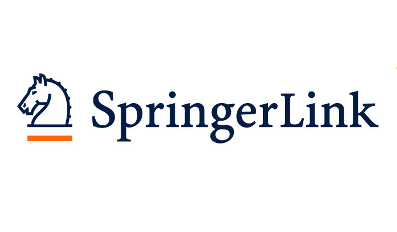 “The behavioural effects elicited by chemical constituents of Cannabis sativa, such as cannabidiol (CBD), on the ventromedial hypothalamus (VMH) are not well understood. There is evidence that VMH neurons play a relevant role in the modulation of unconditioned fear-related defensive behavioural reactions displayed by laboratory animals.
“The behavioural effects elicited by chemical constituents of Cannabis sativa, such as cannabidiol (CBD), on the ventromedial hypothalamus (VMH) are not well understood. There is evidence that VMH neurons play a relevant role in the modulation of unconditioned fear-related defensive behavioural reactions displayed by laboratory animals.
OBJECTIVES:
This study was designed to explore the specific pattern of distribution of the CB1 receptors in the VMH and to investigate the role played by this cannabinoid receptor in the effect of CBD on the control of defensive behaviours and unconditioned fear-induced antinociception.
METHODS:
A panic attack-like state was triggered in Wistar rats by intra-VMH microinjections of N-methyl-D-aspartate (NMDA). One of three different doses of CBD was microinjected into the VMH prior to local administration of NMDA. In addition, the most effective dose of CBD was used after pre-treatment with the CB1 receptor selective antagonist AM251, followed by NMDA microinjections in the VMH.
RESULTS:
The morphological procedures demonstrated distribution of labelled CB1 receptors on neuronal perikarya situated in dorsomedial, central and ventrolateral divisions of the VMH. The neuropharmacological approaches showed that both panic attack-like behaviours and unconditioned fear-induced antinociception decreased after intra-hypothalamic microinjections of CBD at the highest dose (100 nmol). These effects, however, were blocked by the administration of the CB1 receptor antagonist AM251 (100 pmol) in the VMH.
CONCLUSION:
These findings suggest that CBD causes panicolytic-like effects and reduces unconditioned fear-induced antinociception when administered in the VMH, and these effects are mediated by the CB1 receptor-endocannabinoid signalling mechanism in VMH.”
https://www.ncbi.nlm.nih.gov/pubmed/31919563
https://link.springer.com/article/10.1007%2Fs00213-019-05435-5
“panicolytic: That reduces the flight reflex in animals when faced with danger. Any drug that has this effect.” https://en.wiktionary.org/wiki/panicolytic
 “To evaluate the efficacy of open-label, highly purified cannabidiol (CBD, Epidiolex®) in treating refractory epilepsy relative to the concomitant use of clobazam (CLB) as well as the clinical implications of changes in CLB and norclobazam (nCLB) levels.”
“To evaluate the efficacy of open-label, highly purified cannabidiol (CBD, Epidiolex®) in treating refractory epilepsy relative to the concomitant use of clobazam (CLB) as well as the clinical implications of changes in CLB and norclobazam (nCLB) levels.”
 “The behavioural effects elicited by chemical constituents of Cannabis sativa, such as
“The behavioural effects elicited by chemical constituents of Cannabis sativa, such as  “Stress is a risk factor for psychosis and treatments which mitigate its harmful effects are needed.
“Stress is a risk factor for psychosis and treatments which mitigate its harmful effects are needed. “Alzheimer’s disease (AD), the leading cause of dementia in the elderly, is a neurodegenerative disorder marked by progressive impairment of cognitive ability. Patients with AD display neuropathological lesions including senile plaques, neurofibrillary tangles, and neuronal loss.
“Alzheimer’s disease (AD), the leading cause of dementia in the elderly, is a neurodegenerative disorder marked by progressive impairment of cognitive ability. Patients with AD display neuropathological lesions including senile plaques, neurofibrillary tangles, and neuronal loss.
 “Two natural mixtures, Allium sativum fermented extract (BGE) and cannabinol oil extract (CBD), were assessed for their ability to inhibit and remove Pseudomonas aeruginosa biofilms on soft contact lenses in comparison to a multipurpose Soft Contact Lens-care solution present on the Italian market.
“Two natural mixtures, Allium sativum fermented extract (BGE) and cannabinol oil extract (CBD), were assessed for their ability to inhibit and remove Pseudomonas aeruginosa biofilms on soft contact lenses in comparison to a multipurpose Soft Contact Lens-care solution present on the Italian market. “In traditional medicine, Cannabis sativa has been prescribed for a variety of diseases. Today, the plant is largely known for its recreational purpose, but it may find a way back to what it was originally known for: a herbal remedy. Most of the plant’s ingredients, such as Δ-tetrahydrocannabinol,
“In traditional medicine, Cannabis sativa has been prescribed for a variety of diseases. Today, the plant is largely known for its recreational purpose, but it may find a way back to what it was originally known for: a herbal remedy. Most of the plant’s ingredients, such as Δ-tetrahydrocannabinol,  “Cannabis was used for cancer patients as early as about 2500 years ago.
“Cannabis was used for cancer patients as early as about 2500 years ago. “This study evaluated the potential of combined cannabis constituents to reduce nausea.
“This study evaluated the potential of combined cannabis constituents to reduce nausea. “Posttraumatic Stress Disorder (PTSD) is a leading psychiatric disorder that mainly affects military and veteran populations but can occur in anyone affected by trauma. PTSD treatment remains difficult for physicians because most patients with PTSD do not respond to current pharmacological treatment. Psychotherapy is effective, but time consuming and expensive. Substance use disorder is often concurrent with PTSD, which leads to a significant challenge for PTSD treatment.
“Posttraumatic Stress Disorder (PTSD) is a leading psychiatric disorder that mainly affects military and veteran populations but can occur in anyone affected by trauma. PTSD treatment remains difficult for physicians because most patients with PTSD do not respond to current pharmacological treatment. Psychotherapy is effective, but time consuming and expensive. Substance use disorder is often concurrent with PTSD, which leads to a significant challenge for PTSD treatment.